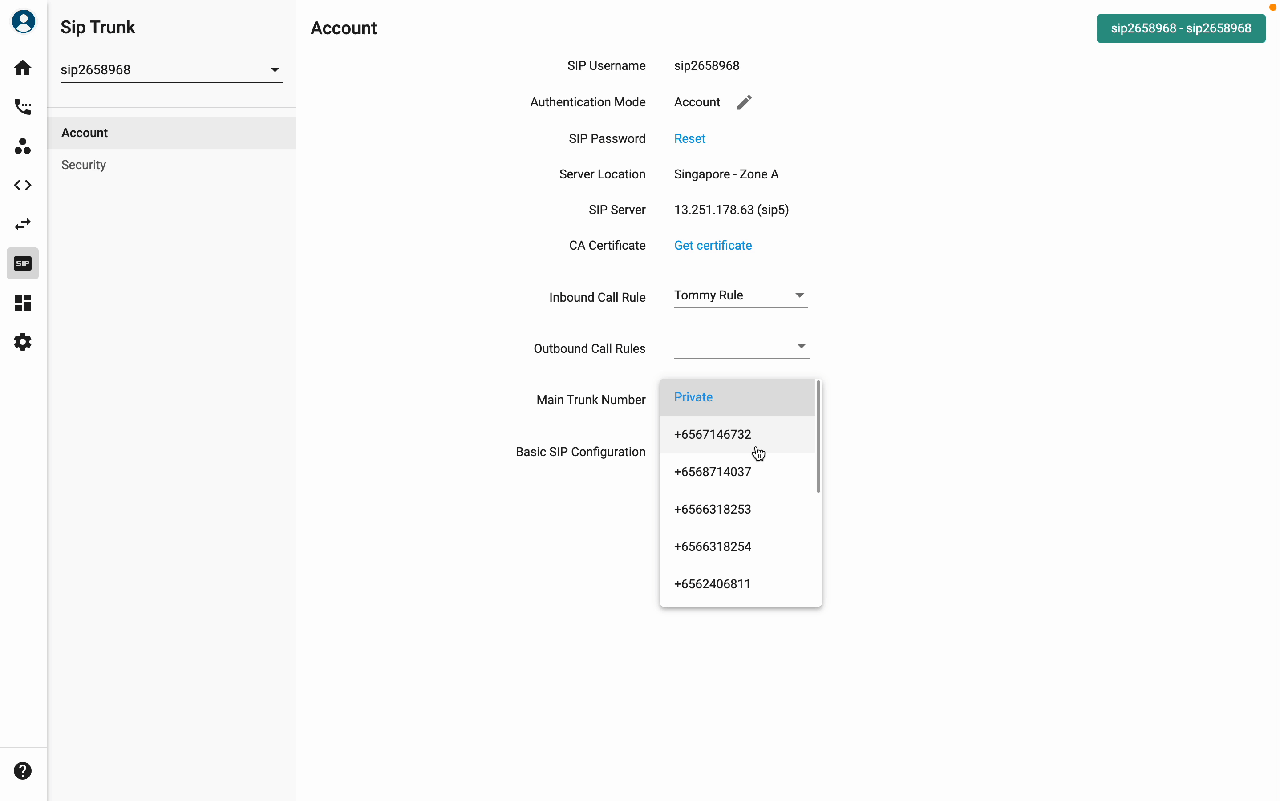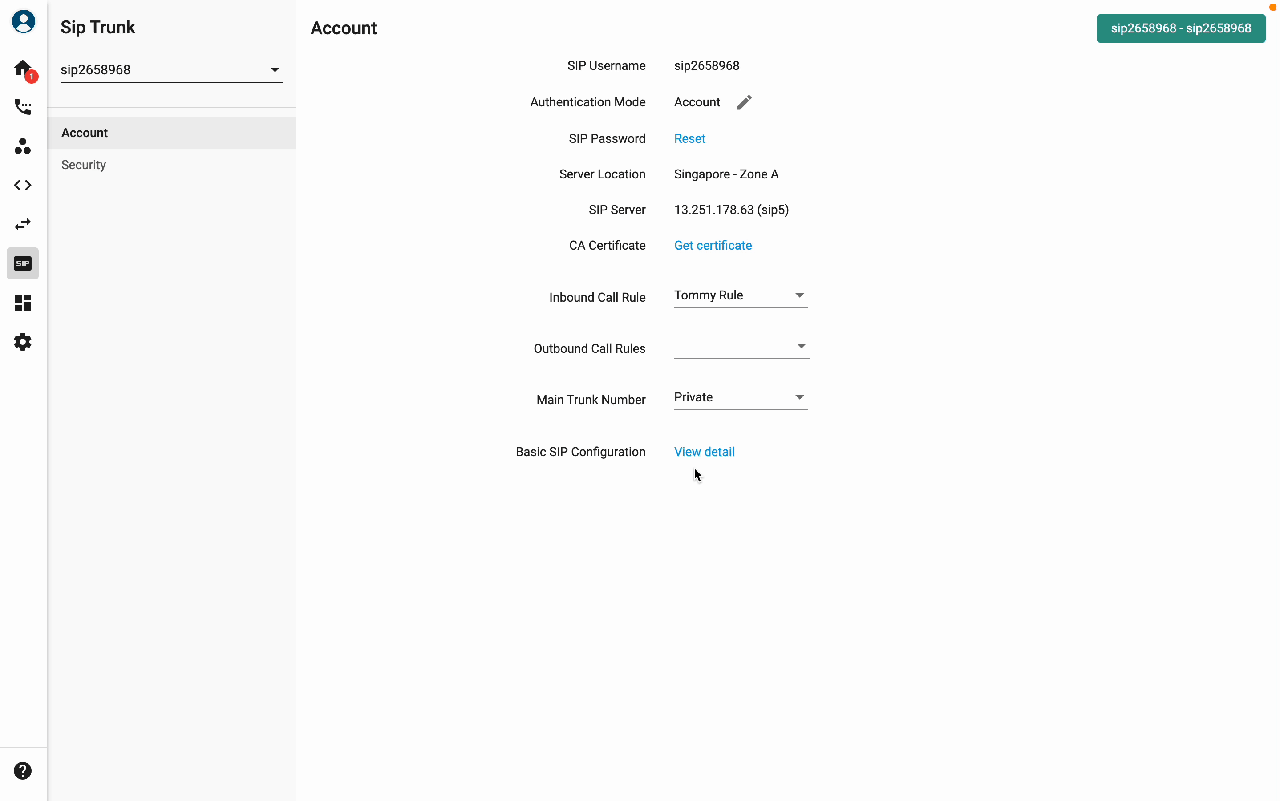SIP Account
Sip Username
This is used for provisioning purposes.
Authentication Mode
There are 2 types of SIP:
Account
Username, Password, Server Domain are required to register a SIP account
IP
Fill in the Transport Protocol, IP Peer, and Port to register the SIP account.
- Transport Protocol: choose the protocol you would like us to send to you,
- UDP
- TCP
- TLS
- IP Peer: fill in your IP Address. We will only send the voice to and charge the usage of this IP address.
- Port number: Ports are standardized across all network-connected devices, with each port assigned a number. Most ports are reserved for certain protocols — for example, all Hypertext Transfer Protocol (HTTP) messages go to port 80. While IP addresses enable messages to go to and from specific devices, port numbers allow targeting of specific services or applications within those devices.
SIP Password
This password will be used for provisioning purposes if the Authentication Mode = Account.
There are two ways to reset and get the SIP password:
- Automatically generate a password
- Create a password
Password policy:
- Length = 14
- Requires at least one uppercase letter
- Requires at least one lowercase letter
- Requires at least one number
- No reusing of last ten passwords
Server Location
Let you know where our server is located.
SIP Server
We provide 2 types of information here:
- Sip Domain: Use sip<x>.b3networks.com (e.g: sip5.b3networks.com) if the Authentication Mode = Account
- IP Address: Use our IP Address to send your calls if theAuthentication Mode = IP
CA Certificate
You can download our Certificate Authority from here when needed.
Inbound Call Rule - Outbound Call Rule
The user can select the Inbound/Outbound Call Rule in SIP Trunk after creating them on the Manage Organization page.
Note:
- Click here for how to create an Inbound Call Rule.
- Click here for how to create an Outbound Call Rule.
Main Trunk Number
This is where you choose the caller ID for your SIP. The ID can only be your purchased SIP numbers.
 Basic SIP Configuration
Basic SIP Configuration
General information
This part gives you the basic SIP information:
- Supported Codes: G.729, GSM, G.711A, G.711U
- Dial Pattern: indicates how to dial a number/make a call from SIP
- <Country Code> + <Area Code> + <Phone Numbers>
- SIP Protocol: Transport protocol: TCP vs UDP
- TCP gives more control
- UDP lighter
- TLS (secure)
- **SIP Registration Period:**3600s
- **Audio Format:**RTP
- RTP Payload Size: 20ms
- DTMF: only supports RFC2833. (IVR)
Firewall Configuration
A firewall is a network security system that monitors and controls the incoming and outgoing network traffic based on predetermined security rules.
- Voice call = Audio + Signaling
*Make sure Firewall allows traffic following the rules mentioned in the SIP App:
Signaling (SIP):
- **IP Addresses:**54.251.119.119
- Ports: 5060 (UDP/TCP)
- Direction: Both incoming and outgoing
Audio (RTP):
- **IP Addresses:**54.251.255.196 to 54.251.255.211
- Ports: 10000-30000 (UDP)
- Direction: Both incoming and outgoing
NAT Configuration (Optional. Use only if PBX is behind NAT)
- **NAT Traversal:**STUN
- **STUN Server:**stun.hoiio.com
- **STUN Port:**3478-3479
- **STUN Protocol:**UDP/TCP
- **Direction:**Both incoming and outgoing
Non-Supported Features
- Call Transfer
- SIP Refer
- SIP Subscribe
- SIP Message
- SIP Publish
- Session Timers
- P-Asserted-Identity
- Remote-Party-ID
- Voice Activity Detection
- SIP ALG
